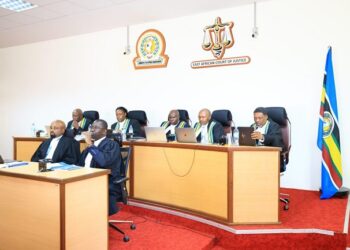OPINION
In March 2025, the State Minister for Finance, Mr. Henry Musasizi tabled the 2025/2026
financial year budget estimates of UGX 71.9 trillion before parliament. The estimates are over
Shs. 19 trillion more than the proposals that were made in the December 2024 under the National
Budget Framework paper.
The budget proposals were enriched by the Ministry of Finance, Planning and Economic
Development following recommendations from parliament to increase allocations to under-
funded areas. While presenting the latest budget proposals, the State Minister for Finance
revealed the following;
Maintaining peace, security and the rule of law, human capital development, full monetization of
the economy, infrastructure development, regional integration, expanding irrigation to stabilize
agriculture, promoting manufacturing through industrial parks, strengthening anti-corruption
measures, conserving and protecting of natural resources and enhancing economic integration at
regional and national levels as the priority areas for FY2025/2026.
Surprisingly, the sustainable energy sector, which we expected to be among the priority areas
was excluded, yet it is crucial when it comes to attaining energy transition plan, mitigating
climate change and protecting natural resources such as forests. In fact, this financial year, the
sustainable energy sector is set to suffer budget cuts being allocated over UGX 1.301 trillion
which is less than the approved budget for FY2024/2025.
During COP28 that was held in Dubai in December 2023, the government of Uganda through the
Ministry of Energy and Mineral Development (MEMD) in collaboration with the International
Energy Agency (IEA) launched the Energy Transition Plan (ETP) to reduce carbon emissions
and safeguard Uganda’s lush forests.
Without doubt, Uganda’s forests are more than just trees, they are the lifeblood of its ecosystems
supporting millions of people that depend on them for water, food and livelihoods. More so,
forests are the lungs of the world, they help us to breathe as well as think, exercise and relax.
However, Uganda’s lush forests are under threat. They are threatened by deforestation, a factor
that has emerged to be one of the most pressing challenges in the country. According to Global
Forest Watch, between 2000 and 2020, Uganda lost over 23% of its forest cover in both natural
and planted forests and an average of 20.8 metric tons of greenhouse gas emissions in the
atmosphere annually.
Furthermore, research indicates that tree cover loss in Uganda is mainly attributed to rapid
population growth and the need for land for settlement and agriculture, urbanization,
industrialization and the increased demand for solid biomass for fuel.
The Uganda National Household Survey (2019/2020) shows that 73% and 21% of households in
Uganda use firewood and charcoal for cooking respectively. Combined biomass fuel (charcoal
and firewood) constitute the main fuel for cooking in 94% of households in Uganda.








































